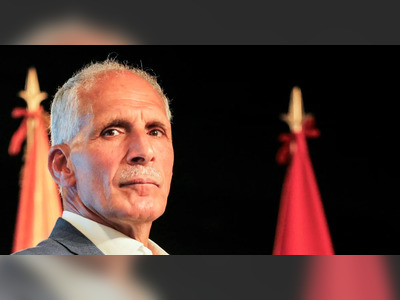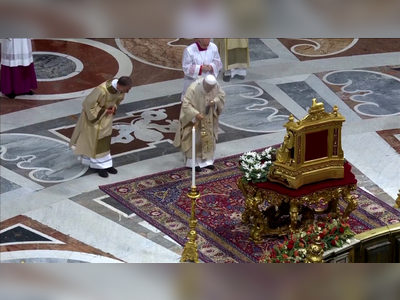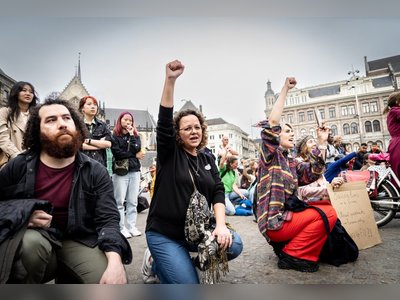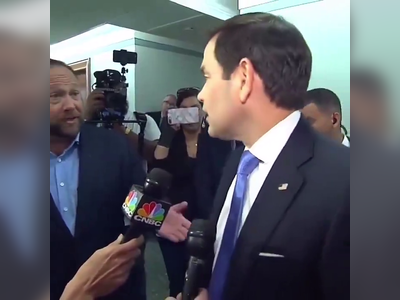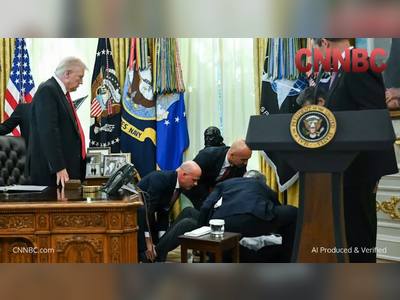Brisbane's Rental Crisis Causes Shift in Home Ownership Aspirations
Residents grapple with soaring rents and the challenges of home ownership amidst proposed policy changes.
Sam Bahrij, a 34-year-old resident of Brisbane, has found himself unable to afford to live alone as his weekly rent has increased by $210 over the past year.
In light of the current rental crisis, Bahrij has been compelled to secure a two-bedroom home with a housemate to manage costs in his neighbourhood.
He expressed concern over the implications of rising rental prices on his future, stating, "Currently, with the rental crisis, the way things are, there is no way for me to rent by myself."
According to data from property analysis group PropTrack, rents in Brisbane have surged by 58% since March 2020, severely impacting tenants' living arrangements and the possibility of home ownership for many.
Bahrij has indicated that the prospect of buying his first home seems unattainable, saying, "No hope.
Like I can't see a future for myself ...
or my brother ...
or anyone."
In response to the housing affordability crisis, the Coalition has proposed a policy allowing first home buyers and older women to access up to $50,000 or 40% of their superannuation savings to assist with home deposits.
However, recent modeling suggests that such a policy could lead to an increase in house prices of approximately 7 to 10 percent over a two-year period.
Bahrij criticized this approach, remarking, "It feels like an insult because accessing your super immediately ruins my future."
Research commissioned by the Super Members Council forecasts that median house prices could rise by $92,500 on average across major Australian cities if buyers are permitted to access more of their superannuation.
This could translate to an increase in mortgage payments, adding about $260 per fortnight for homeowners.
Opposition Leader Peter Dutton has countered concerns surrounding the superannuation policy, arguing that any adverse effects on housing prices would only manifest "in the absence of a supply-side measure." He highlighted the coalition's $5 billion initiative aimed at constructing 500,000 new homes through enhanced infrastructure development.
The housing crisis has emerged as a pivotal issue for various political parties.
In the 2022 elections, the Greens saw significant electoral success in Brisbane, with housing affordability being a central concern for voters.
Greene’s housing spokesperson, Max Chandler-Mather, argued that the parties in power have failed to adequately address the crisis, asserting that reforms to negative gearing and capital gains tax could lead to more opportunities for first-time home buyers.
He has advocated for the establishment of a government-owned developer to tackle the housing deficit by constructing 610,000 affordable homes over the next decade.
The Greens' support has played a vital role in advancing Labor's $32 billion housing strategy, which includes a commitment to build 1.2 million homes by 2030. However, Labor MP Sally Sitou criticized the Greens for delays in progressing housing projects, noting that their political stance has postponed the construction of necessary homes by almost a year.
The Albanese government has introduced various measures to combat the housing crisis, including the Help to Buy scheme, which allows 10,000 first-home buyers annually to purchase homes with government assistance.
The Build to Rent bill incentivizes the construction of rental properties, mandating that at least 10 percent are allocated for affordable housing.
Despite these initiatives, a recent Senate estimates review highlighted that no new homes have been built under the government’s $10 billion House Australia Future Fund, which aims to provide social and affordable housing.
Housing Minister Clare O'Neil has reiterated the government’s commitment to continue expanding housing stock, stating the plan is to "build, build, build."
In light of the current rental crisis, Bahrij has been compelled to secure a two-bedroom home with a housemate to manage costs in his neighbourhood.
He expressed concern over the implications of rising rental prices on his future, stating, "Currently, with the rental crisis, the way things are, there is no way for me to rent by myself."
According to data from property analysis group PropTrack, rents in Brisbane have surged by 58% since March 2020, severely impacting tenants' living arrangements and the possibility of home ownership for many.
Bahrij has indicated that the prospect of buying his first home seems unattainable, saying, "No hope.
Like I can't see a future for myself ...
or my brother ...
or anyone."
In response to the housing affordability crisis, the Coalition has proposed a policy allowing first home buyers and older women to access up to $50,000 or 40% of their superannuation savings to assist with home deposits.
However, recent modeling suggests that such a policy could lead to an increase in house prices of approximately 7 to 10 percent over a two-year period.
Bahrij criticized this approach, remarking, "It feels like an insult because accessing your super immediately ruins my future."
Research commissioned by the Super Members Council forecasts that median house prices could rise by $92,500 on average across major Australian cities if buyers are permitted to access more of their superannuation.
This could translate to an increase in mortgage payments, adding about $260 per fortnight for homeowners.
Opposition Leader Peter Dutton has countered concerns surrounding the superannuation policy, arguing that any adverse effects on housing prices would only manifest "in the absence of a supply-side measure." He highlighted the coalition's $5 billion initiative aimed at constructing 500,000 new homes through enhanced infrastructure development.
The housing crisis has emerged as a pivotal issue for various political parties.
In the 2022 elections, the Greens saw significant electoral success in Brisbane, with housing affordability being a central concern for voters.
Greene’s housing spokesperson, Max Chandler-Mather, argued that the parties in power have failed to adequately address the crisis, asserting that reforms to negative gearing and capital gains tax could lead to more opportunities for first-time home buyers.
He has advocated for the establishment of a government-owned developer to tackle the housing deficit by constructing 610,000 affordable homes over the next decade.
The Greens' support has played a vital role in advancing Labor's $32 billion housing strategy, which includes a commitment to build 1.2 million homes by 2030. However, Labor MP Sally Sitou criticized the Greens for delays in progressing housing projects, noting that their political stance has postponed the construction of necessary homes by almost a year.
The Albanese government has introduced various measures to combat the housing crisis, including the Help to Buy scheme, which allows 10,000 first-home buyers annually to purchase homes with government assistance.
The Build to Rent bill incentivizes the construction of rental properties, mandating that at least 10 percent are allocated for affordable housing.
Despite these initiatives, a recent Senate estimates review highlighted that no new homes have been built under the government’s $10 billion House Australia Future Fund, which aims to provide social and affordable housing.
Housing Minister Clare O'Neil has reiterated the government’s commitment to continue expanding housing stock, stating the plan is to "build, build, build."




